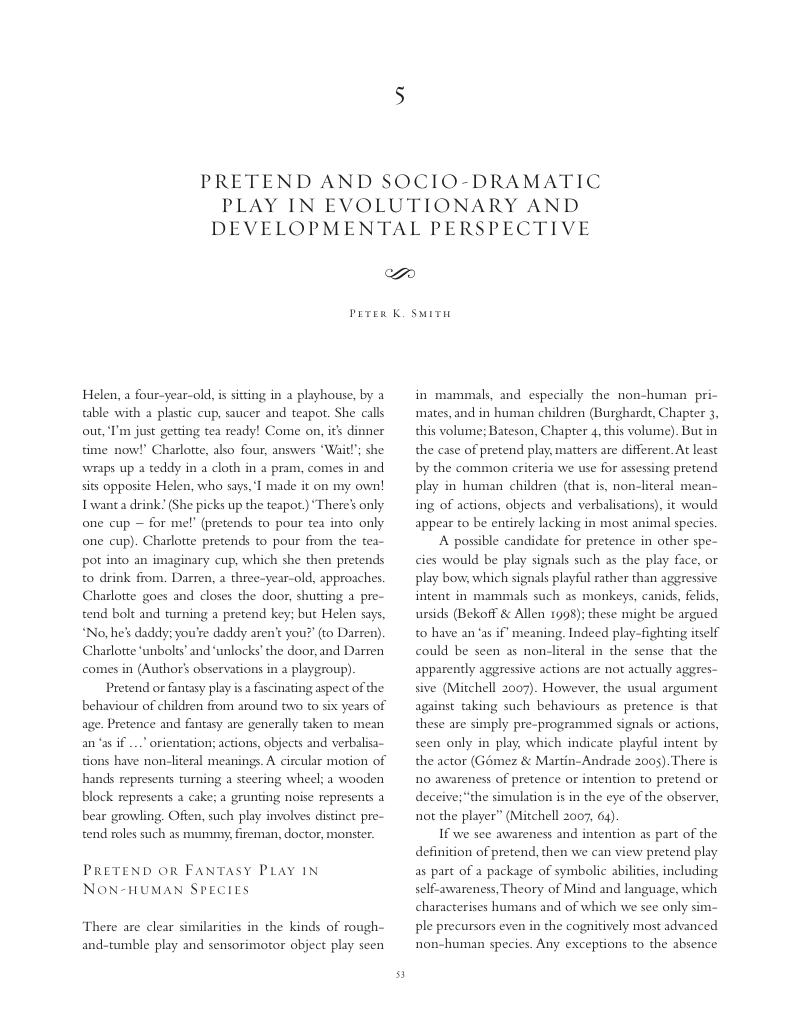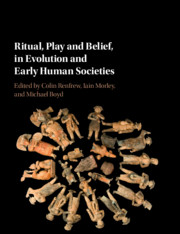Book contents
- Ritual, Play and Belief, in Evolution and Early Human Societies
- Ritual, Play and Belief, in Evolution and Early Human Societies
- Copyright page
- Dedication
- Contents
- Notes on the Contributors
- Acknowledgements
- 1 Introducing Ritual, Play and Belief, in Evolution and Early Human Societies
- 2 Introduction: Play as the Precursor of Ritual in Early Human Societies
- Part I Play and Ritual: Forms, Foundations and Evolution in Animals and Humans
- 3 The Origins, Evolution and Interconnections of Play and Ritual: Setting the Stage
- 4 Play and Creativity
- 5 Pretend and Socio-dramatic Play in Evolutionary and Developmental Perspective
- 6 Pretend Play, Cognition and Life-History in Human Evolution
- 7 From Play and Ritualisation to Ritual and Its Arts: Sources of Upper Pleistocene Ritual Practices in Lower Middle Pleistocene Ritualised and Play Behaviours in Ancestral Hominins
- Part II Playing with Belief and Performance in Ancient Societies
- Part III The Ritual in the Game, the Game in the Ritual
- Part IV From Play to Faith? Discussion
- Index
- References
5 - Pretend and Socio-dramatic Play in Evolutionary and Developmental Perspective
from Part I - Play and Ritual: Forms, Foundations and Evolution in Animals and Humans
Published online by Cambridge University Press: 06 December 2017
- Ritual, Play and Belief, in Evolution and Early Human Societies
- Ritual, Play and Belief, in Evolution and Early Human Societies
- Copyright page
- Dedication
- Contents
- Notes on the Contributors
- Acknowledgements
- 1 Introducing Ritual, Play and Belief, in Evolution and Early Human Societies
- 2 Introduction: Play as the Precursor of Ritual in Early Human Societies
- Part I Play and Ritual: Forms, Foundations and Evolution in Animals and Humans
- 3 The Origins, Evolution and Interconnections of Play and Ritual: Setting the Stage
- 4 Play and Creativity
- 5 Pretend and Socio-dramatic Play in Evolutionary and Developmental Perspective
- 6 Pretend Play, Cognition and Life-History in Human Evolution
- 7 From Play and Ritualisation to Ritual and Its Arts: Sources of Upper Pleistocene Ritual Practices in Lower Middle Pleistocene Ritualised and Play Behaviours in Ancestral Hominins
- Part II Playing with Belief and Performance in Ancient Societies
- Part III The Ritual in the Game, the Game in the Ritual
- Part IV From Play to Faith? Discussion
- Index
- References
Summary

- Type
- Chapter
- Information
- Publisher: Cambridge University PressPrint publication year: 2017



